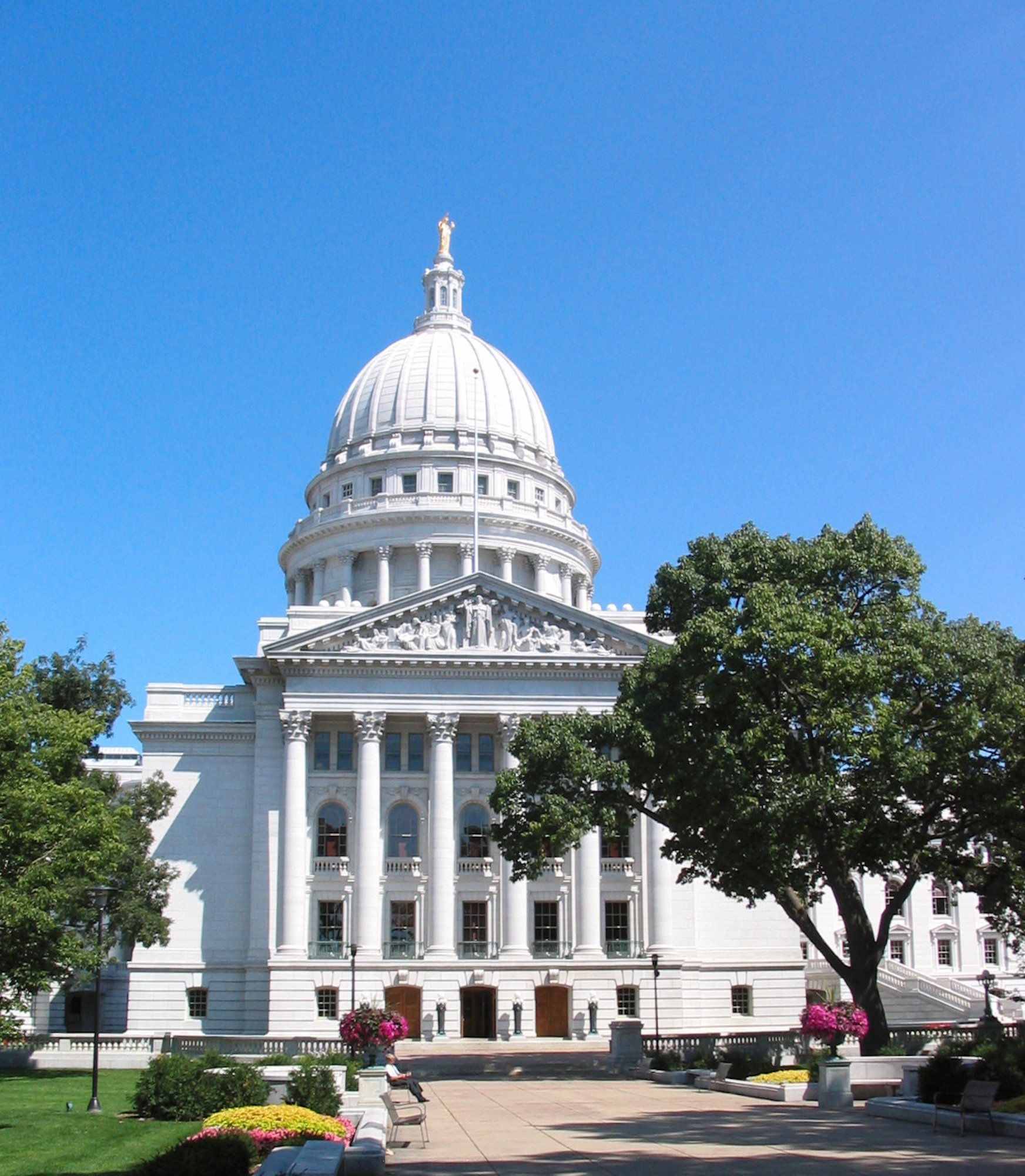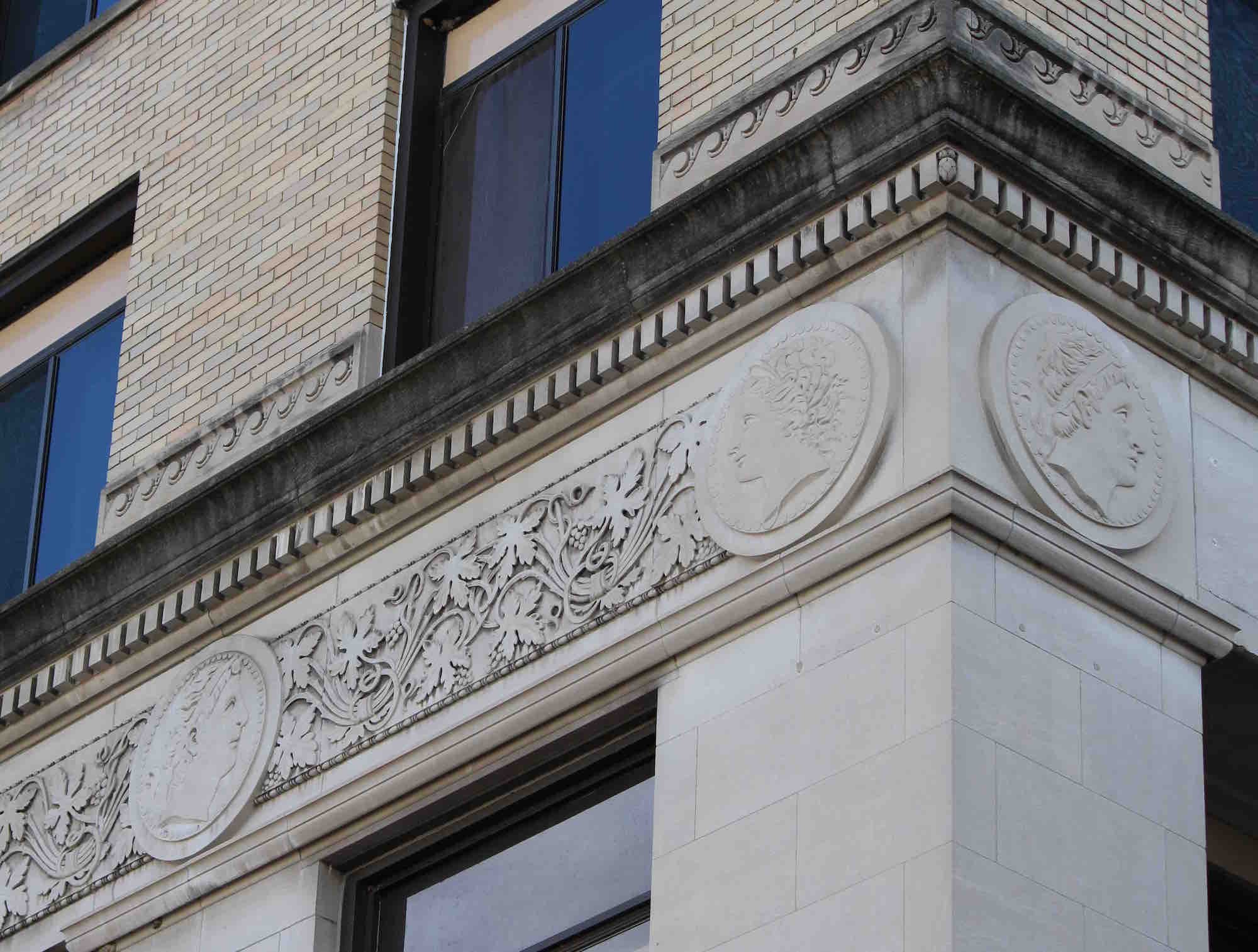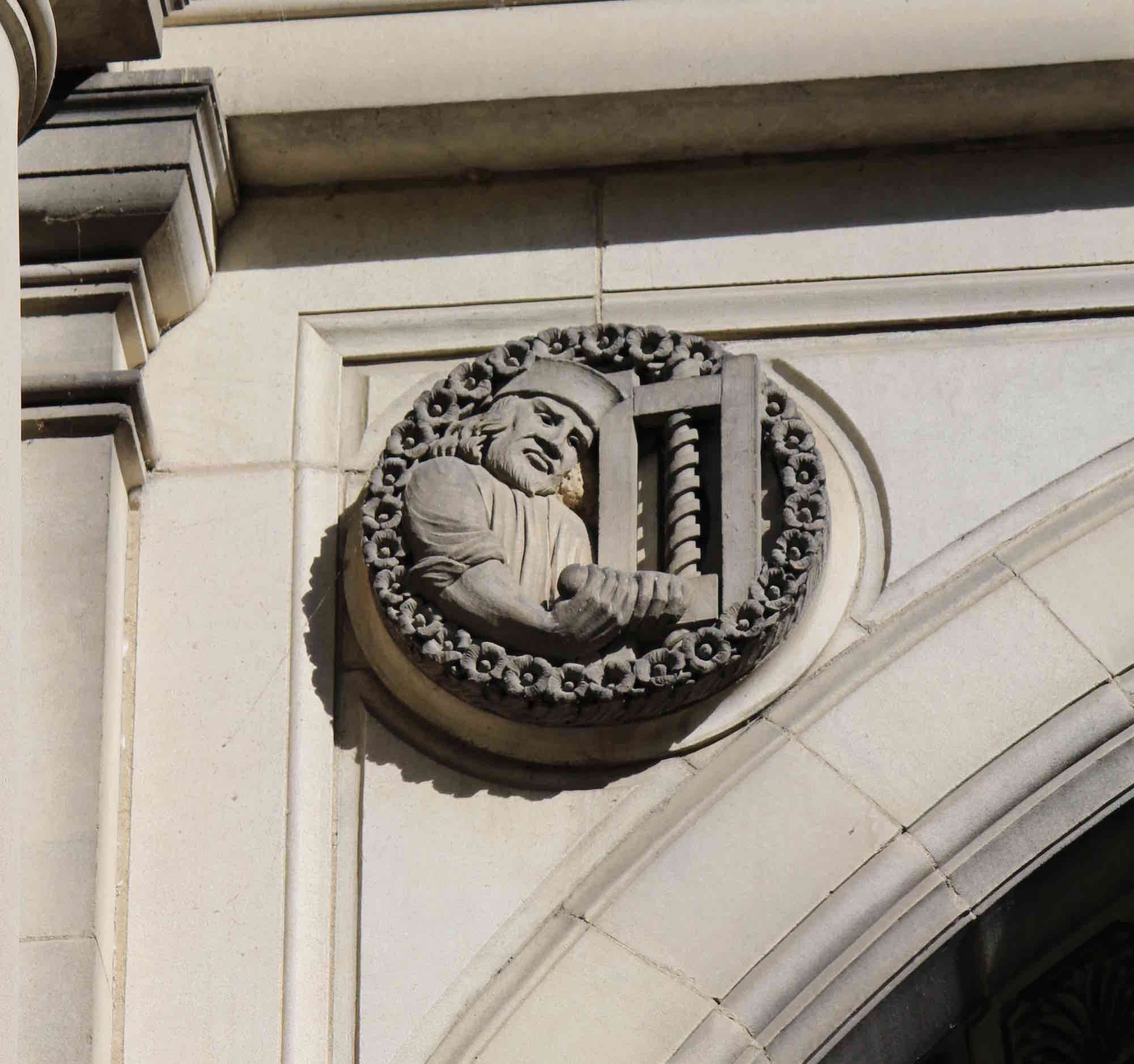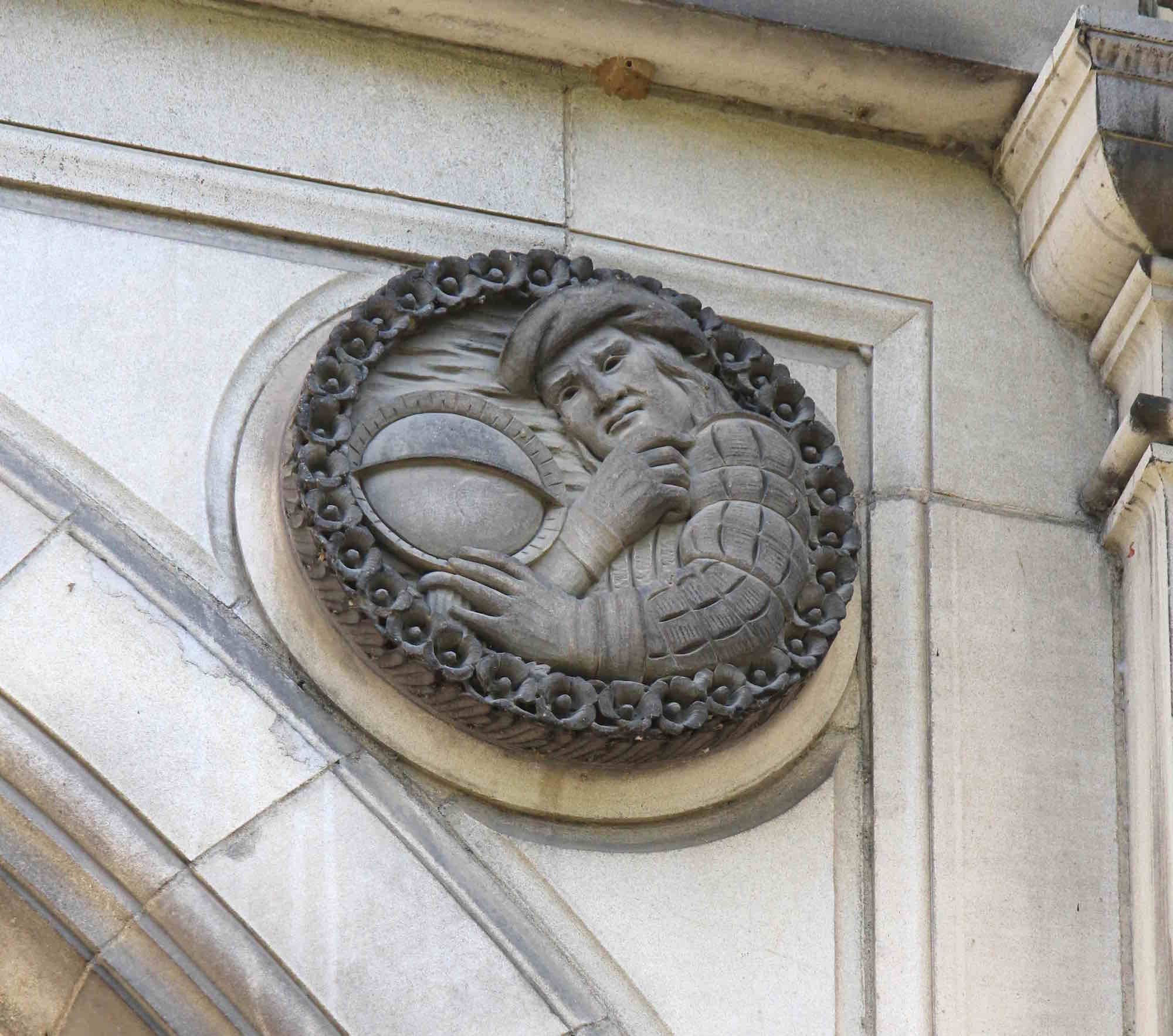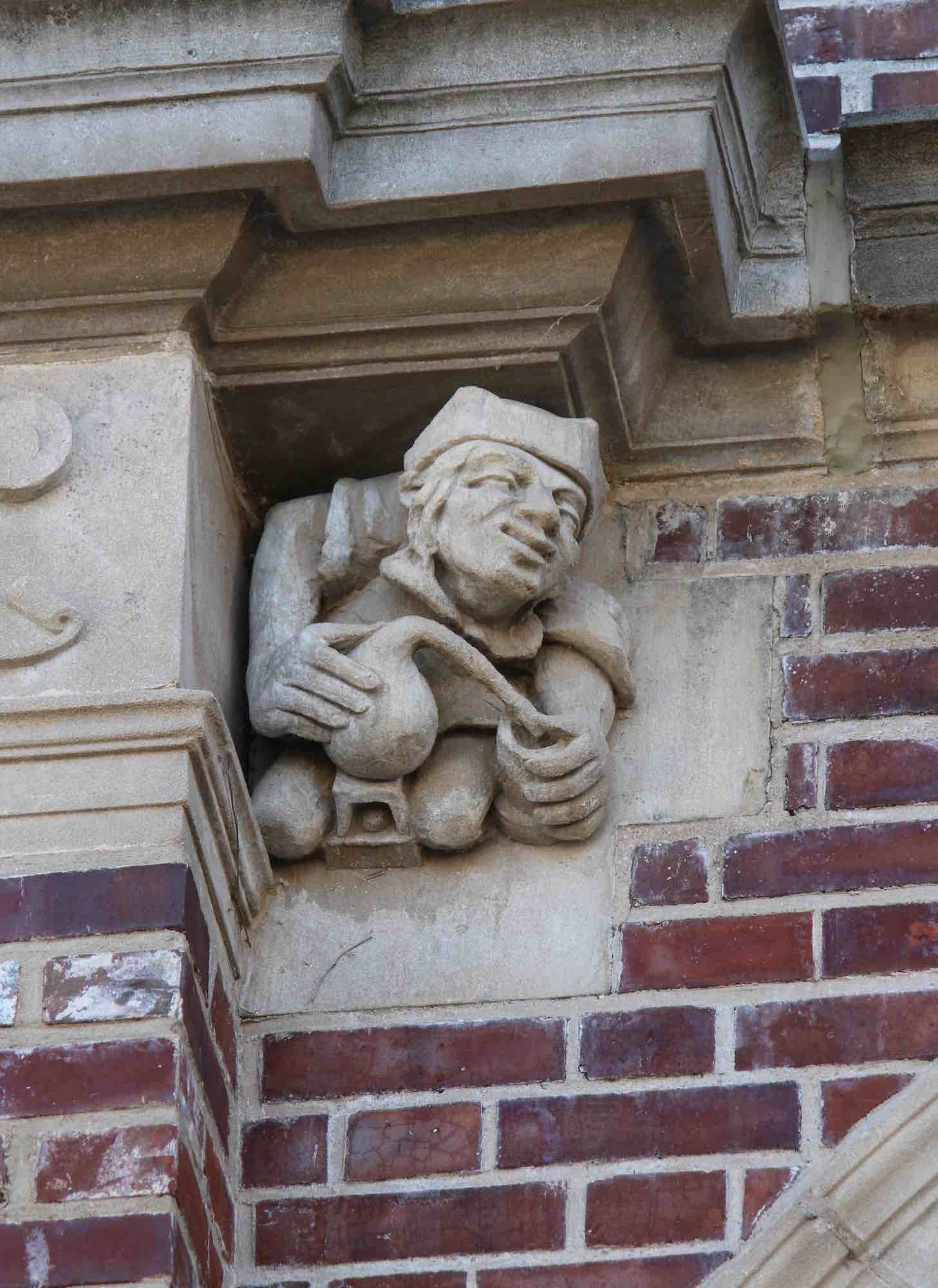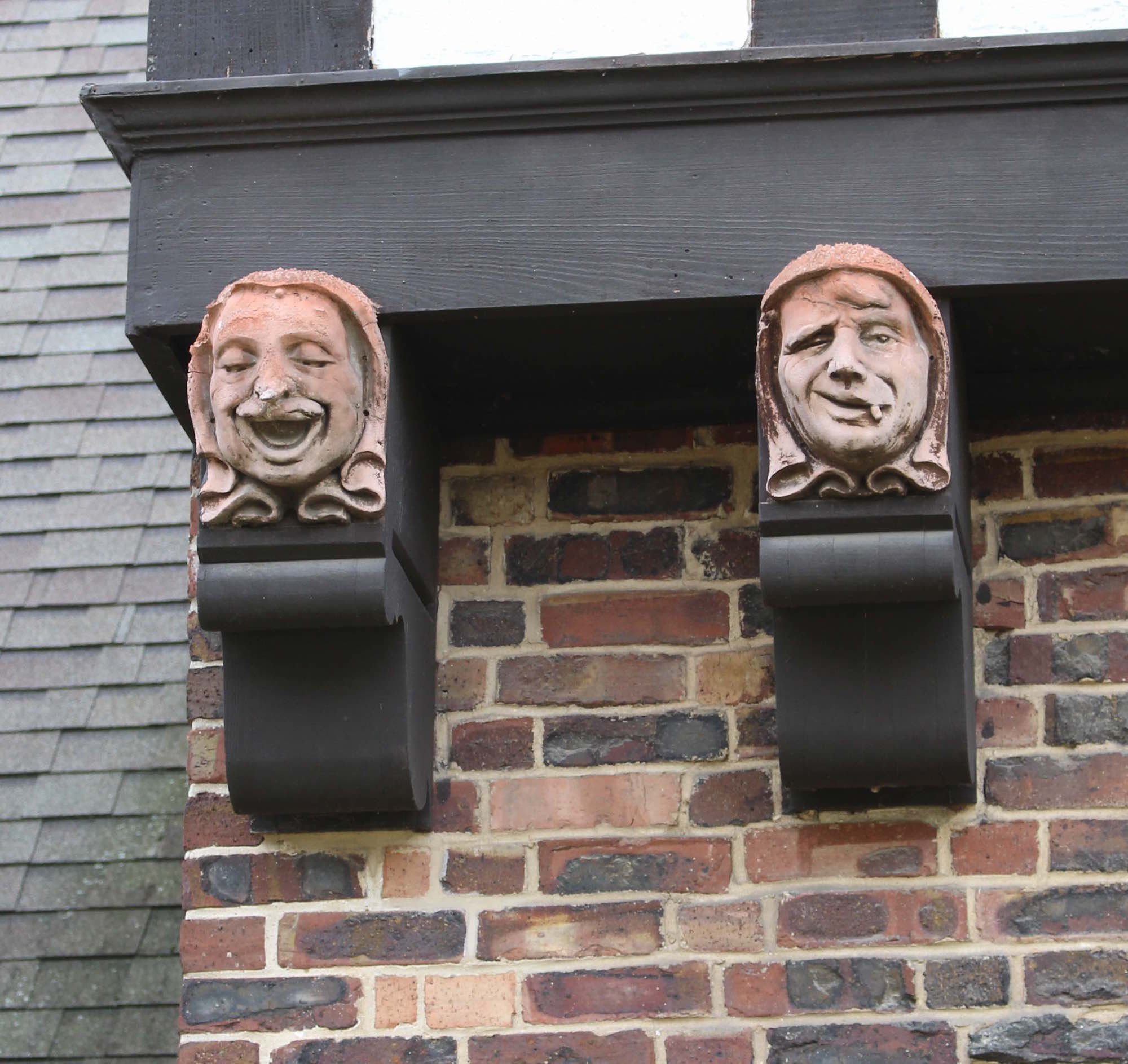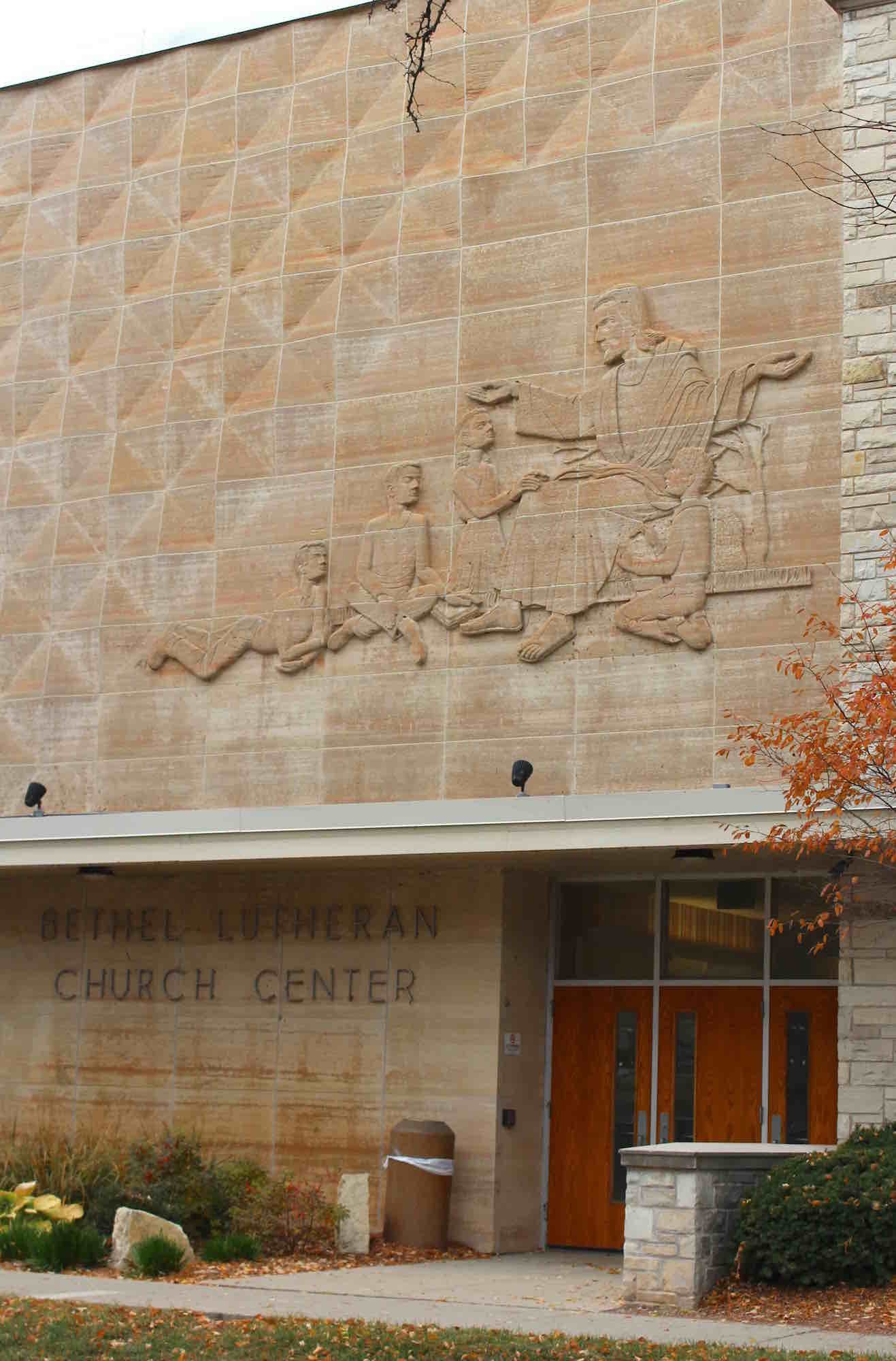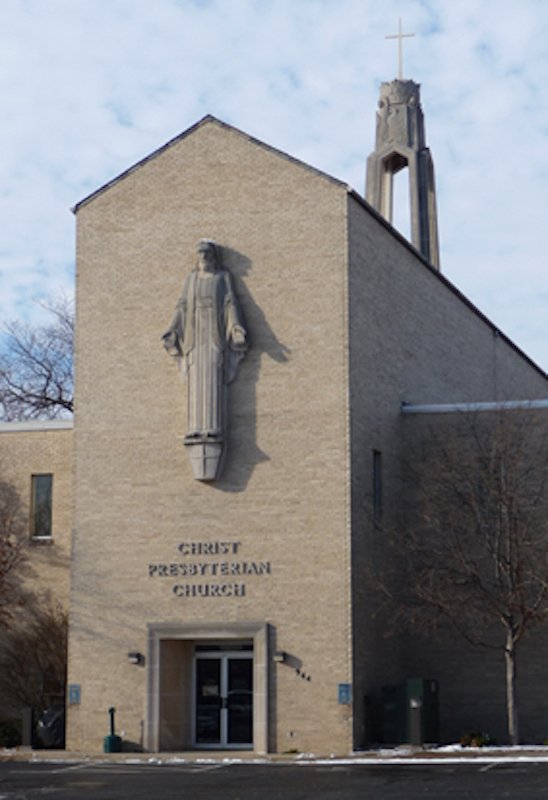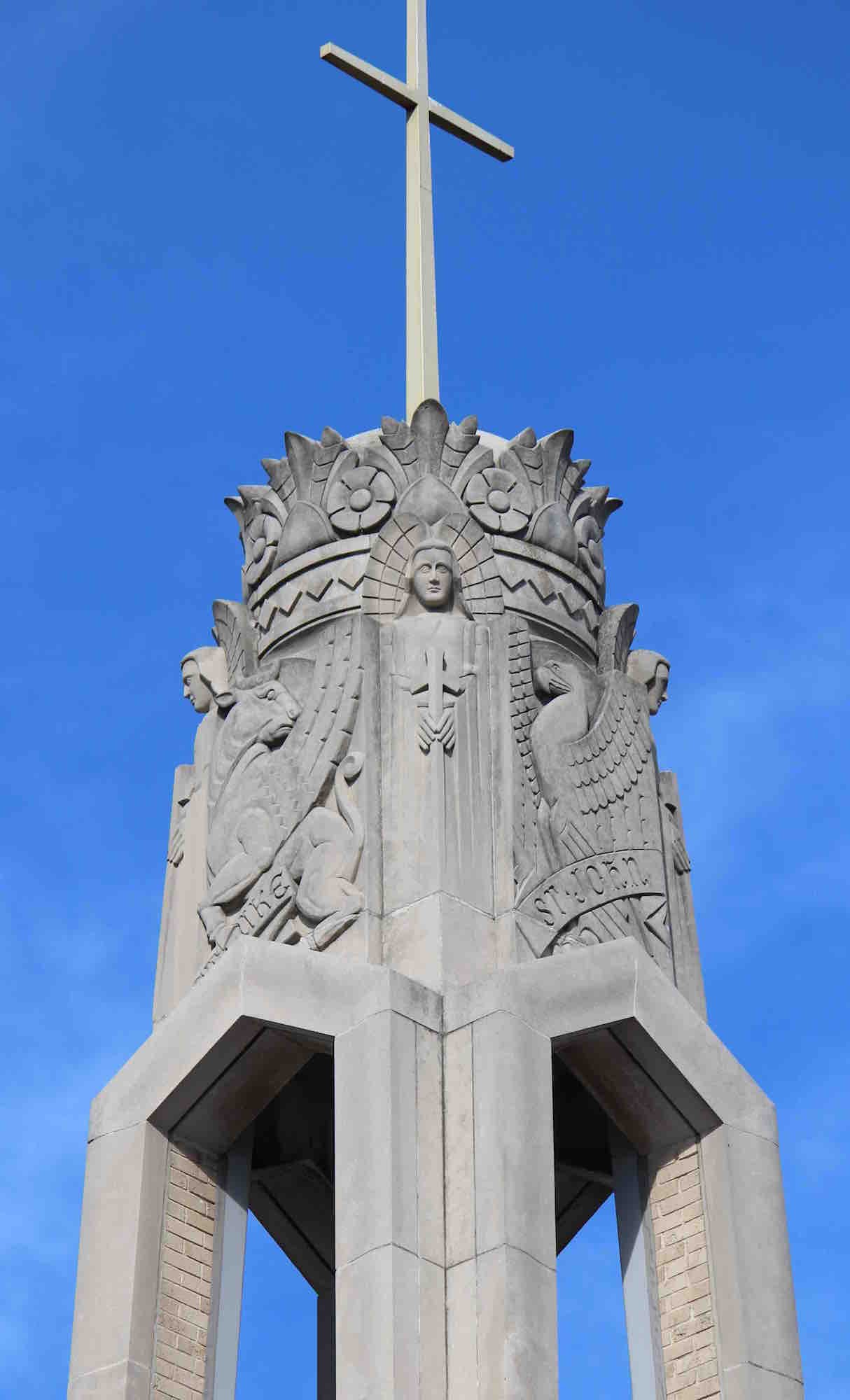Stone-Faced
By Michael Bridgeman
From the earliest days of building in stone, the human figure has often been incorporated as part of the structure. People are attracted to artistic representations of the human form, particularly the face, whether they are somber or playful, explicitly instructive or merely decorative. And buildings—at least the exteriors—are the most public of art.
The long tradition of human (or humanlike) figures used as architectural ornament is echoed on some Madison buildings, most of them in revival styles drawn from precedents that commonly used these kinds of details. Three-dimensional architectural sculpture is rare in Madison; we are more likely to find figures rendered in bas-relief.
This month I take a visual tour of stone-faced figures that are integral parts of Madison buildings. My survey doesn’t include free-standing statues or figures represented in metal, mosaics, or glass. I focus on stone and materials like cast stone and terra cotta. This is just a sampling and there are other treasures, large and small, to be found by being attentive to what we see.
(Neo)Classical
In Madison, nothing compares to the Wisconsin State Capitol for its sculptural display of human forms. Architect George B. Post & Sons engaged important artists to execute the sculptural and decorative program for their Beaux Arts masterpiece. The resulting edifice is in a category by itself and worthy of more attention than I can give it here. Background on the capitol sculptors and a video presentation by retired chief state architect Dan Stephans can be found at the WisContext website. Fortunately, Madison has more modest examples of classically inspired stone faces, too.
The triangular pediments on each wing are prominent components of the sculptural program for the Wisconsin State Capitol (1906-1917). In addition, four sculptural groups are positioned at the base of the dome and “Wisconsin” rises atop the dome.
The Bank of Wisconsin (1917), across from the capitol at 1 W. Main St., uses Neoclassical ornament and motifs. Architects Law, Law & Potter included circular medallions with bas-relief faces in the entablature that tops the three-story limestone-clad base. The medallions are in a frieze decorated with intertwined grape leaves.
Photo: Michael Bridgeman
In 1921, when Claude & Starck converted Fire Station No. 2 into offices for the Castle & Doyle Fuel Company. They gave the building at 125 State St. a Neoclassical façade in terra cotta (not stone). Above a doorway is a mascaron. First used by Romans, reputedly to drive away evil spirits, mascarons reappeared as decorative details in the Renaissance and later.
Photo: Michael Bridgeman
Medieval(ish) & Tudor(esque)
The Medieval period was a spirited time for stone-faced details on buildings, both sacred and secular. Gothic buildings appeared across much of Europe while Tudor refers specifically to England during the early Renaissance. In America, as Virginia Savage McAlester writes, “The popular name for the style [Tudor] is historically imprecise since relatively few examples closely mimic the architectural characteristics of Tudor (16th-century) England. Instead, the style is loosely adapted from a variety of late Medieval and early Renaissance English prototypes.” [1]
In Madison we find the kind of Tudoresque structures that were popular across the U.S. from the late nineteenth to mid-twentieth centuries. They provide most of the stone faces we see in our area. They run from the sacred and symbolic to the secular and comic.
Though categorized as Tudor Revival [2], St. Francis House has a Romanesque style portal with a bas-relief carving of Jesus Christ and two angels in the tympanum under an arch. The building at 1011 University Ave. dates from 1925 and was designed by Eschweiler & Eschweiler. It was repositioned on its site about 10 years ago.
Photo: Michael Bridgeman
On the same block as St. Francis House, Luther Memorial Church uses a Neo-Gothic Revival vocabulary for its portal. Here Christ is seen among text and symbols (lilies and the Greek letters alpha and omega) that allude to biblical verses. The National Register building was designed by Claude & Starck and completed in 1923.
Photo: Michael Bridgeman
The Madison Vocational School (later Madison Area Technical College) was completed in 1921 in the Neo-Gothic style. You’ll find stone faces appropriate to the school’s focus in the spandrels above and either side of the arched doorway at 211 N. Carroll St. The figure above to the left is operating a Gutenberg-style printing press while the fellow on the right is studying a globe. Ferdinand Kronenberg designed the building, which is on the National Register of Historic Places.
The University Club at 803 State St. features eight figures tucked under the cornice of the porch over the main entrance. Each whimsical character is portrayed with a tool of his academic trade, a retort for the chemist on the above left and a gear for the engineer on the right. Law, Law & Potter were the architects for this section of the Tudor Revival building that dates to 1924.
Law, Law & Potter was responsible for many of the Tudor Revival houses that sprang up in Madison in the 1920s and 1930s, including these two. On the above left, four identical faces appear on large brackets under the second story of the Leo T. Crowley House (1929) at 1110 Edgewood Ave. On the right, architect James Law’s own house (1925) at 101 N. Prospect Ave. has four different faces on smaller brackets, including a smirking fellow with a cigarette hanging from his mouth.
Modern(istic)
Modern architecture shunned ornament, especially traditional decorative displays. Nonetheless, human and divine figures continued to appear on the façades of some religious buildings in the decades following World War II when modernism was dominant. While colored glass and mosaics were fairly popular, figures in stone occasionally appear on Madison structures.
The education wing of Bethel Lutheran Church was dedicated in 1964 and features a bas-relief image of children in modern dress gathered around a seated Christ. Lewis Siberz was the architect for the Contemporary style addition facing East Johnson Street which is behind the Neo-Gothic Revival church at 312 Wisconsin Ave.
Photo: Michael Bridgeman
Christ Presbyterian Church dedicated its new Contemporary style building in 1963. On the above left, a large sculpture of Christ marked an entrance at 944 E. Gorham St. and has since been replaced; the same figure appears on the rear of the church looking toward Lake Mendota. On the right, the steeple over the center of the nave features angels plus traditional symbols representing the writers of the four gospels: a winged ox for St. Luke (left) and a rising eagle for St. John (right).
Keep an Eye Out
This tour is not an exhaustive look at stone faces that look over us from Madison buildings. Time and circumstances make that impossible. Still, I can recommend a few more places to check out in person:
The John Olin House at 130 Prospect Place, classified as Tudor Revival, has two discreet faces on the chimney mass that rises on the left side of the façade.
The “Elizabethan Revival” Longfellow School at 210 S. Brooks St. has six faces that peer down from high on the central block of the main façade.
Edgewood High School at 2209 Monroe St. has human figures around the main entry, both inside the arch and ascending the edges of the entry block, where a man’s head (reportedly St. Dominic) alternates with doves.
If you’re walking about and think someone is watching you, it might be a fixed gaze from a stone-faced figure.
- - -
Sources
[1] McAlester, Virginia Savage. A Field Guide to American Houses (New York: Alfred A. Knopf), 2015. p.454
[2] Architecture & History Inventory (Madison: Wisconsin Historical Society). Reference No. 113373

